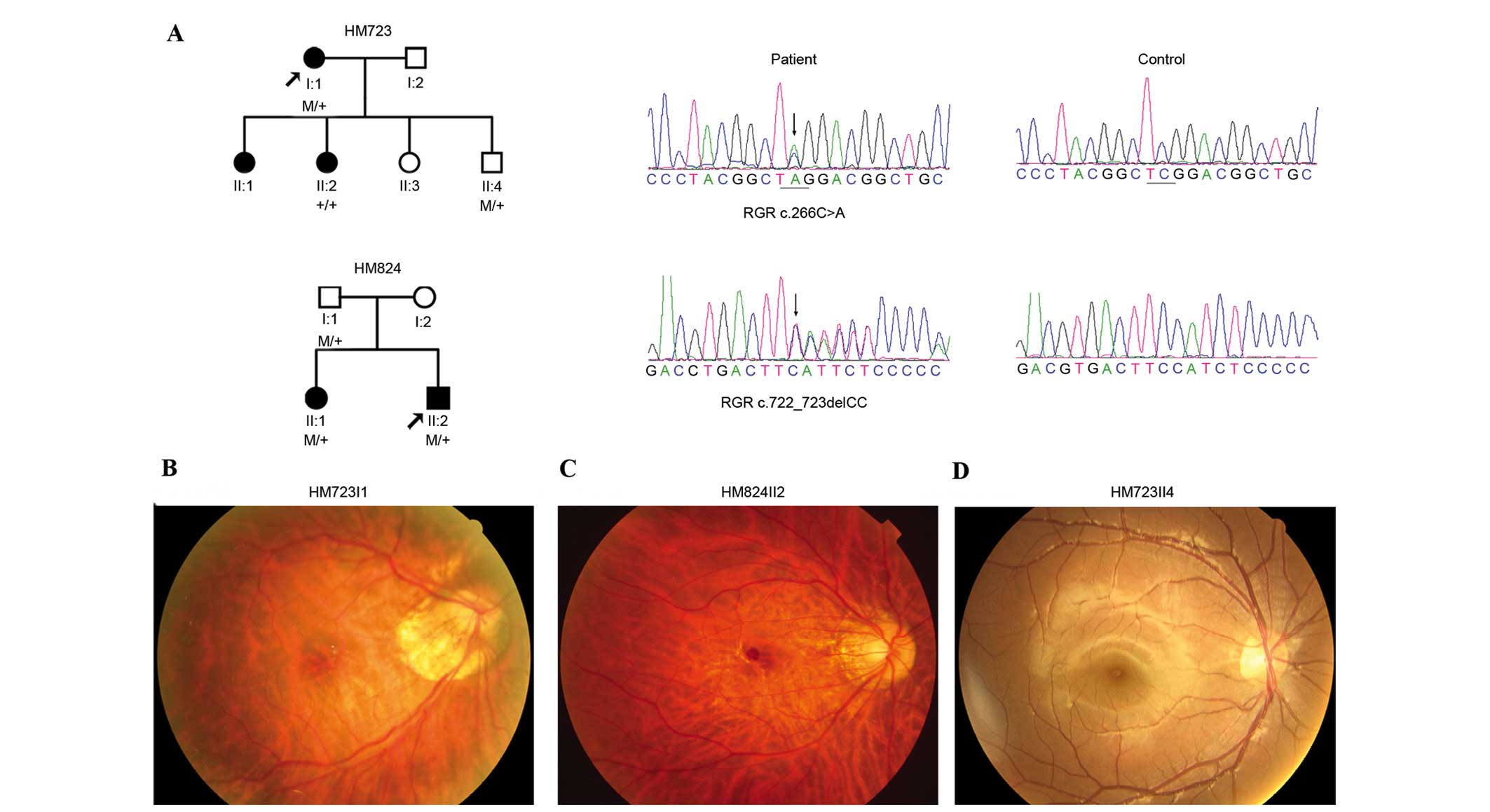RGR variants in different forms of retinal diseases: The undetermined role of truncation mutations
- Authors:
- Published online on: October 13, 2016 https://doi.org/10.3892/mmr.2016.5847
- Pages: 4811-4815
Metrics:
Total
Views: 0 (Spandidos Publications: | PMC Statistics:
)
Total PDF Downloads: 0 (Spandidos Publications: | PMC Statistics:
)
Abstract
It has been previously reported that mutations in retinal G protein coupled receptor (RGR) are associated with retinitis pigmentosa. The present study aims to systemically analyze the potential role of variants of RGR in retinal diseases. Variants in coding regions and splice sites of RGR were selected from a whole exome sequencing dataset of 820 probands with various forms of genetic ocular diseases. Potential variants of RGR were further confirmed by Sanger sequencing and analyzed in available family members. Clinical data was reviewed for patients with RGR variants. As a result, a total of five variants in RGR were detected in six probands with different types of ocular diseases. Of the five variants, two were novel heterozygous truncation variations, c.266C>A (p.S89*) and c.722_723delCC (p.S241Yfs*29), identified in two probands with high myopia and confirmed by Sanger sequencing. Segregation analysis on available family members demonstrated p.S89* and p.S241Yfs*29 were also present in unaffected relatives. The other three variants of RGR were heterozygous missense variants randomly occurring in patients with different genetic ocular diseases. No homozygous or compound heterozygous variants were detected. The results of the present study suggested that the heterozygous truncation variants in RGR were less likely to be pathogenic. Further studies are expected to evaluate the pathogenicity of variants in RGR.











